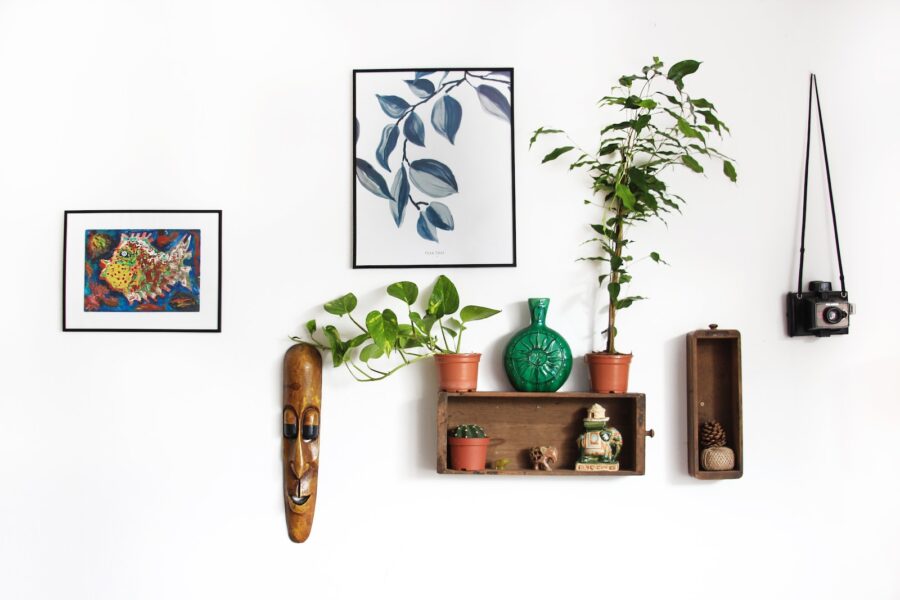For those who have an office job, much of our time is spent indoors, immersed in office life, and all that comes with it, which can mean a long time looking at screens and a lack of fresh air. However, with employee expectations changing and wellbeing increasingly at the top of employers’ agendas, we have seen a growing trend of those examining the design of office spaces looking to strengthen our exposure to the natural world within a work environment, a concept known as “biophilic design.”
Employers’ consideration of creating a healthy and attractive working environment has been pivotal to the increasing popularity of design that centres on connection with nature, reflecting their increased focus on employee wellbeing, and recognising the benefits of architecture that connects those using the space with the outside world.
Gone are the days when employees would settle for just a desk and a chair, and even free ‘work perks’ such as a gym membership or healthy snacks on tap feel a little jaded. Offices are no longer merely functional spaces, devoid of character and inspiration, they must be an environment that supports physical and mental health, fosters creativity, and enhances productivity or collaboration. In essence, offices must be better than working from home.
Biophilic design, which has gained increasing attention over recent years, is an innovative approach that seeks to reconnect humans with nature within the built environment. It incorporates natural elements like greenery, sustainable materials and natural light into the workspace. It is not merely an aesthetic trend, but a holistic approach to design that considers how real sensory forms of nature can connect people with the outside environment, and harness the benefits this can bring.
Biophilic design has many advantages, for both our health and wellbeing. It not only improves air quality and helps control humidity indoors, but also reduces stress, boosts creativity, and enhances overall employer satisfaction.
Government research recently showed that 36.8 million working days were lost due to work-related ill health, including stress, anxiety, and depression, across 2021/22. The cost of this to UK business was £18.8 billion. This is a stark figure that highlights that work-related ill health is taking a heavy toll on both employees’ wellbeing but also the health of businesses.
However, research from Human Spaces offers some optimism. Their findings revealed that employees who work in offices with natural design elements, such as greenery and natural light, reported significant improvements in their overall well-being. Specifically, they reported a remarkable 15% increase in their well-being levels and a 15% increase in creativity than those who worked in an environment devoid of these natural designs. Employees were also 6% more productive in offices with biophilic design incorporated into their workplaces.
This provides compelling evidence that organisations that invest in creating a healthier, more biophilic centred workplace have better outcomes. I don’t simply mean this in terms of business performance but even more importantly, these carefully curated environments put employee well-being, job satisfaction, and creativity at the centre.
In a country where more than half of young workers have taken sick leave in the past six months because of mental health problems, biophilic design offers a proactive approach to creating a supportive work environment that fosters positive wellbeing. The impact cannot be underestimated.
It therefore doesn’t come as a surprise to me that many business owners are exploring ways to incorporate the environment, light and natural designs into the workplace.
Landmark’s Orchard Place in London puts biophilic design into practice. You might have guessed from the name, but this space puts its woodland and vineyard theme at the forefront, using a design that encourages feelings of calm through the use of nature. Biophilic connections are abundant. From the 42 types of lush plants draped from ceilings and bookshelves, to large windows to allow sunlight to pour in and use of natural materials to add to the feeling of serenity.
The building design and wall colours are carefully considered, the journey throughout the space is softened using organically shaped curved walls with a calming colour pallet inspired by nature. The bespoke, hand painted murals that depict the outdoor world, set the scene in the co-working space, encouraging the viewer to stop and appreciate the wonder an intricacies of nature. Meeting room names, including Woodland, Arboretum, Vineyard, Meadow and Orchard, are also reminiscent of outdoor spaces and the restorative power of nature.
When executed well, biophilic design features meld together the functionality of a built environment but still give employees and clients the sense that they are surrounded by greenery and nature. While some might consider this design trend a result of wanting to escape from the hustle and bustle of city life; biophilic design will develop into a major style marker of this decade that speaks to our evolving values of fostering creativity and encouraging wellbeing at work.
So, I leave you with this: The future of work is about more than just profit and productivity and wellness and wellbeing in the workplace isn’t just a nice to have. By crafting environments that prioritise well-being and putting biophilic design at the heart, we can empower employees to thrive, innovate, and contribute to a healthier and happier, workforce. This movement is here to stay, and it is reshaping the future of the traditional workspace for the better. The more we incorporate nature within the design of a space, the more productive we become.

Charlotte Stewart
Landmark has a team of over 160 people supporting 11,500+ clients daily, from fast-growing companies to established SMEs and global blue chips. Reflecting its diverse range of clients, Landmark’s two brands, Landmark and The Space, provide a varied range of work environments to accommodate the ever-changing needs of different businesses. Ranging from custom designed private offices to fully-furnished entire floors – as well as co-working spaces, virtual offices and hire-on-demand meeting rooms.


